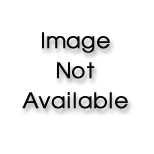
FUND.OF GEN CHEM CHAP 1-13 W/ACCESS
16th Edition
ISBN: 9781323406038
Author: McMurry
Publisher: PEARSON C
expand_more
expand_more
format_list_bulleted
Question
Chapter 4.3, Problem 4.5P
Interpretation Introduction
Interpretation:
The positions of all double bonds in the given structure of caffeine are to be shown.
Concept introduction:
Covalent bonds are formed by sharing of electrons between atoms.
The valence electrons of Carbon are 4 electrons (requires 4 electrons to achieve octet).
The valence electrons of Oxygen are 6 electrons (requires 2 electrons to achieve octet).
The valence electrons of Hydrogen are 1 electron.
The sharing of one electron from two atoms constitutes a single bond between the two atoms. The sharing of two electrons from two atoms constitutes a double bond between the two atoms
Expert Solution & Answer
Trending nowThis is a popular solution!

Students have asked these similar questions
How can chirality and stereoisomers influence the pharmacology, bioactivity, toxicology, pharmacokinetics, and metabolism of ibuprofen?
Please provide a detailed summary of what might happen if, for instance, the R enantiomer isn't able to be inverted to the bioactive S enantiomer.
Write the Structure Activity Relationship (SAR) of Barbiturates? Please write at your own words.
Explain the widely used drugs contain a benzene ring ?
Chapter 4 Solutions
FUND.OF GEN CHEM CHAP 1-13 W/ACCESS
Ch. 4.1 - Prob. 4.1PCh. 4.2 - Prob. 4.2PCh. 4.2 - Prob. 4.3PCh. 4.3 - Prob. 4.4PCh. 4.3 - Prob. 4.5PCh. 4.4 - The BF3 molecule can also react with NH3 by...Ch. 4.5 - Prob. 4.7PCh. 4.7 - Prob. 4.8PCh. 4.7 - Add lone pairs where appropriate to the following...Ch. 4.7 - Prob. 4.10P
Ch. 4.7 - Prob. 4.11PCh. 4.7 - The molecular model shown here is a representation...Ch. 4.7 - Prob. 4.1CIAPCh. 4.7 - Prob. 4.2CIAPCh. 4.7 - Prob. 4.13PCh. 4.8 - Prob. 4.3CIAPCh. 4.8 - Prob. 4.4CIAPCh. 4.8 - Prob. 4.14PCh. 4.8 - Prob. 4.15PCh. 4.8 - Prob. 4.16PCh. 4.8 - Prob. 4.17KCPCh. 4.9 - The elements H, N, O, P, and S are commonly bonded...Ch. 4.9 - Prob. 4.19PCh. 4.10 - Look at the molecular shape of formaldehyde (CH2O)...Ch. 4.10 - Prob. 4.21PCh. 4.10 - Prob. 4.22KCPCh. 4.11 - Prob. 4.5CIAPCh. 4.11 - Prob. 4.6CIAPCh. 4.11 - Prob. 4.23PCh. 4.11 - Prob. 4.24PCh. 4 - What is the geometry around the central atom in...Ch. 4 - Prob. 4.26UKCCh. 4 - The ball-and-stick molecular model shown here is a...Ch. 4 - Prob. 4.28UKCCh. 4 - Prob. 4.29UKCCh. 4 - Prob. 4.30UKCCh. 4 - What is a covalent bond, and how does it differ...Ch. 4 - Prob. 4.32APCh. 4 - When are multiple bonds formed between atoms and...Ch. 4 - Identify the bonds formed between the following...Ch. 4 - Prob. 4.35APCh. 4 - Prob. 4.36APCh. 4 - Prob. 4.37APCh. 4 - Prob. 4.38APCh. 4 - Prob. 4.39APCh. 4 - Prob. 4.40APCh. 4 - Prob. 4.41APCh. 4 - Prob. 4.42APCh. 4 - Prob. 4.43APCh. 4 - Prob. 4.44APCh. 4 - Prob. 4.45APCh. 4 - Prob. 4.46APCh. 4 - Prob. 4.47APCh. 4 - If a research paper appeared reporting the...Ch. 4 - Consider the following possible structural...Ch. 4 - Prob. 4.50APCh. 4 - Prob. 4.51APCh. 4 - Prob. 4.52APCh. 4 - Prob. 4.53APCh. 4 - Prob. 4.54APCh. 4 - Draw a Lewis structure for the following...Ch. 4 - Prob. 4.56APCh. 4 - Ethanol, or grain alcohol, has the formula C2H6O...Ch. 4 - Prob. 4.58APCh. 4 - Tetrachloroethylene, C2Cl4, is used commercially...Ch. 4 - Prob. 4.60APCh. 4 - The carbonate ion, CO32, contains a double bond....Ch. 4 - Prob. 4.62APCh. 4 - Prob. 4.63APCh. 4 - Prob. 4.64APCh. 4 - Prob. 4.66APCh. 4 - Predict the geometry around each carbon atom in...Ch. 4 - Prob. 4.68APCh. 4 - Prob. 4.69APCh. 4 - Prob. 4.70APCh. 4 - Prob. 4.71APCh. 4 - Prob. 4.72APCh. 4 - Which of the following bonds are polar? If a bond...Ch. 4 - Prob. 4.74APCh. 4 - Based on electronegativity differences, would you...Ch. 4 - Arrange the following molecules in order of the...Ch. 4 - Prob. 4.77APCh. 4 - Prob. 4.78APCh. 4 - Prob. 4.79APCh. 4 - Prob. 4.80APCh. 4 - Prob. 4.81APCh. 4 - Prob. 4.82APCh. 4 - Prob. 4.83APCh. 4 - Prob. 4.84APCh. 4 - Prob. 4.85CPCh. 4 - Prob. 4.86CPCh. 4 - Prob. 4.87CPCh. 4 - Prob. 4.88CPCh. 4 - Prob. 4.89CPCh. 4 - The phosphonium ion, PH4+, is formed by reaction...Ch. 4 - Prob. 4.91CPCh. 4 - Prob. 4.92CPCh. 4 - Prob. 4.93CPCh. 4 - Prob. 4.94CPCh. 4 - Prob. 4.95CPCh. 4 - Prob. 4.96CPCh. 4 - Prob. 4.97CPCh. 4 - Write Lewis structures for molecules with the...Ch. 4 - Prob. 4.99CPCh. 4 - Prob. 4.100GPCh. 4 - Hydrazine is a substance used to make rocket fuel....Ch. 4 - Prob. 4.102GPCh. 4 - Titanium forms both molecular and ionic compounds...
Knowledge Booster
Similar questions
- Define the term sulfasalazine?arrow_forwardList the common structural features of prostaglandins.arrow_forwardWith respect to the parent compound, explain in detail how modifying the rings shown as A, B, C, D and E in morphine can affect the biological activity associated with the moleculearrow_forward
- Show the structure of Oxycodonearrow_forwardA derivative of a triterpene that contains four fused rings is referred to as a _____________.arrow_forwardAs a substituent, the hydrocarbon “tail” of the Ibuprofen molecule (see circle above) can be best described as n-butyl.  sec-butyl. isobutyl. tert-butylarrow_forward
- Briefly describe about allosteric effect of a drug, explain allosteric effect with an examplearrow_forwardExplain in terms of the Michaelis-Menten equation why alcohol degradation is not first-orderwhile most other drugs are.arrow_forwardplease list in order if is is anabolic or catabolic.arrow_forward
arrow_back_ios
arrow_forward_ios
Recommended textbooks for you
- Essentials of Pharmacology for Health ProfessionsNursingISBN:9781305441620Author:WOODROWPublisher:Cengage

Essentials of Pharmacology for Health Professions
Nursing
ISBN:9781305441620
Author:WOODROW
Publisher:Cengage